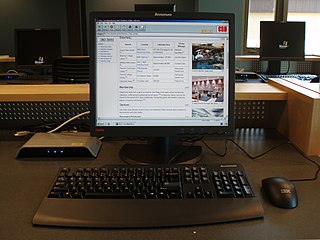 W
WIn computer networking, a thin client is a simple (low-performance) computer that has been optimized for establishing a remote connection with a server-based computing environment. The server does most of the work, which can include launching software programs, performing calculations, and storing data. This contrasts with a fat client or a conventional personal computer; the former is also intended for working in a client–server model but has significant local processing power, while the latter aims to perform its function mostly locally.
 W
WAnywhereTS is a software thin client solution for Microsoft Windows.
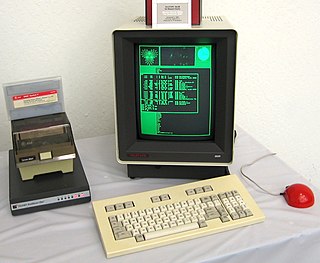 W
WIn computing, the Blit was a programmable bitmap graphics terminal designed by Rob Pike and Bart Locanthi Jr. of Bell Labs in 1982.
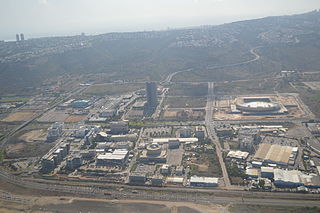 W
WChip PC Technologies is a developer and manufacturer of thin client solutions and management software for server-based computing; where in a network architecture applications are deployed, managed and can be fully executed on the server.
 W
WWyse is an American manufacturer of cloud computing systems. They are best known for their video terminal line introduced in the 1980s, which competed with the market leading Digital. They also had a successful line of IBM PC compatible workstations in the mid-to-late 1980s, but were outcompeted by companies such as Dell starting late in the decade. Current products include thin client hardware and software as well as desktop virtualization solutions. Other products include cloud software-supporting desktop computers, laptops, and mobile devices. Dell Cloud Client Computing is partnered with IT vendors such as Citrix, IBM, Microsoft, and VMware.
 W
WDisplayLink is a semiconductor and software technology company. They develop the DisplayLink USB graphics technology, which is designed to connect computers and displays using USB, Ethernet, and WiFi. It also allows multiple displays to be connected to a single computer. DisplayLink's primary customers are notebook OEMs, LCD monitor manufacturers and PC accessory vendors, supporting the Microsoft Windows, macOS, Android, ChromeOS and Linux operating systems.
 W
WIGEL Technology is an international software company best known for their "Next generation edge operating system" which is purpose-built for secure access to cloud workspaces such as Virtual Desktop Infrastructure (VDI) and/or Desktop as a Service.
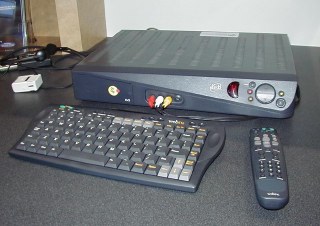 W
WMSN TV was a web access product consisting of a thin client device which used a television for display, and the online service that supported it. The device design and service was developed by WebTV Networks, Inc., a company started in 1995. The WebTV product was announced in July 1996; in April 1997, the company was purchased by Microsoft Corporation and absorbed into MSN.
 W
WNdiyo was a not-profit organisation based out of Cambridge, United Kingdom, which aimed to promote networked computing that is "simple, affordable, open." Ndiyo, pronounced nn-dee-yo, is the Swahili word for "yes". The company developed an ultra-thin client called the nivo based on Ubuntu Linux and other open-source software, for use especially in developing countries. The data sent to the clients over the network was pixel data, using a similar approach to Virtual Network Computing (VNC).
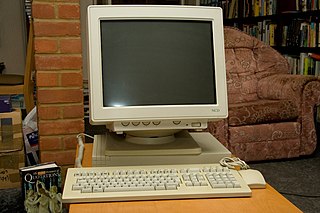 W
WNetwork Computing Devices (NCD) was a company founded in 1987 to produce a new class of products now known as a "thin client". It was founded in Mountain View, CA, and when it closed it was headquartered in Beaverton, Oregon.
 W
WopenThinClient is an open-source thin client solution. It includes a Java-based management application and a Java-based server component. The software can be downloaded from the internet free of charge and is licensed under the GNU General Public License (GNU-GPL). openThinClient is being developed to administer medium to large numbers of thin clients.
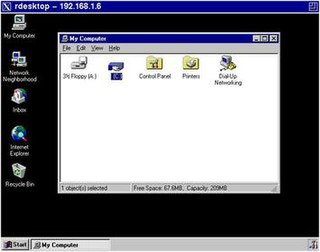 W
Wrdesktop is an implementation of a client software for Microsoft's proprietary Remote Desktop Protocol (RDP). Rdesktop is free and open-source software, subject to the requirements of the GNU General Public License (GPL), version 3 and is available for Linux and BSD as well as for Microsoft Windows.
 W
WHP ZCentral Remote Boost, formerly known as HP Remote Graphics Software or HP RGS is a client-server remote desktop software developed by HP Inc. and initially launched in 2003. HP RGS enables remote access to high-performance workstations from many different devices including other Workstations, PCs, Windows tablets, MacBooks and thin-clients. The software is targeted at remote access to graphic intensive applications, Video editing and complex 3D models. Collaboration, or screen sharing, between multiple users, remote USB and sound, as well as Windows and Linux are also supported. HP markets RGS for "Real-Time Collaboration", "Workstation-Class Mobility" and "Remote Workers"
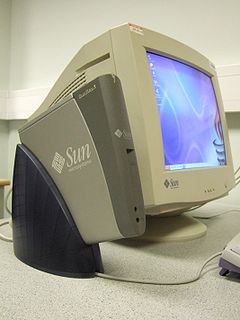 W
WThe Sun Ray from Oracle is a stateless thin client solution aimed at corporate environments, originally introduced by Sun Microsystems in September 1999 and discontinued by Oracle in 2014. It featured a smart card reader and several models featured an integrated flat panel display.
 W
WTeradici is a privately held software company founded in 2004, with its head office in Metropolitan Vancouver, BC. Teradici initially developed a protocol (PCoIP) for compressing and decompressing images and sound when remotely accessing blade servers, and implemented it in hardware. This technology was later expanded to thin clients/zero clients for general Virtual Desktop Infrastructure. Teradici's protocol or hardware is used by HP, Dell-Wyse, Amulet Hotkey, Samsung, Amazon Web Services, Fujitsu, and VMware.
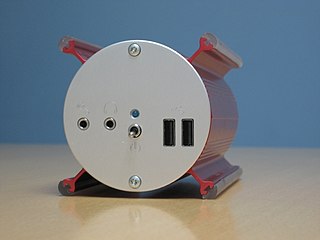 W
WThinCan is the name for a thin client manufactured by Estonian electronic design start-up Artec Group. The ThinCan remained relatively unknown outside Estonia until 2006, when a recent ThinCan iteration was selected as the hardware base for the Linutop, a network appliance that greatly stimulated the market for lightweight computing platforms. The ThinCan was also commercialized by SmartLink under the Revnetek brand name.
 W
WIn computing, an X terminal is a display/input terminal for X Window System client applications. X terminals enjoyed a period of popularity in the early 1990s when they offered a lower total cost of ownership alternative to a full Unix workstation.